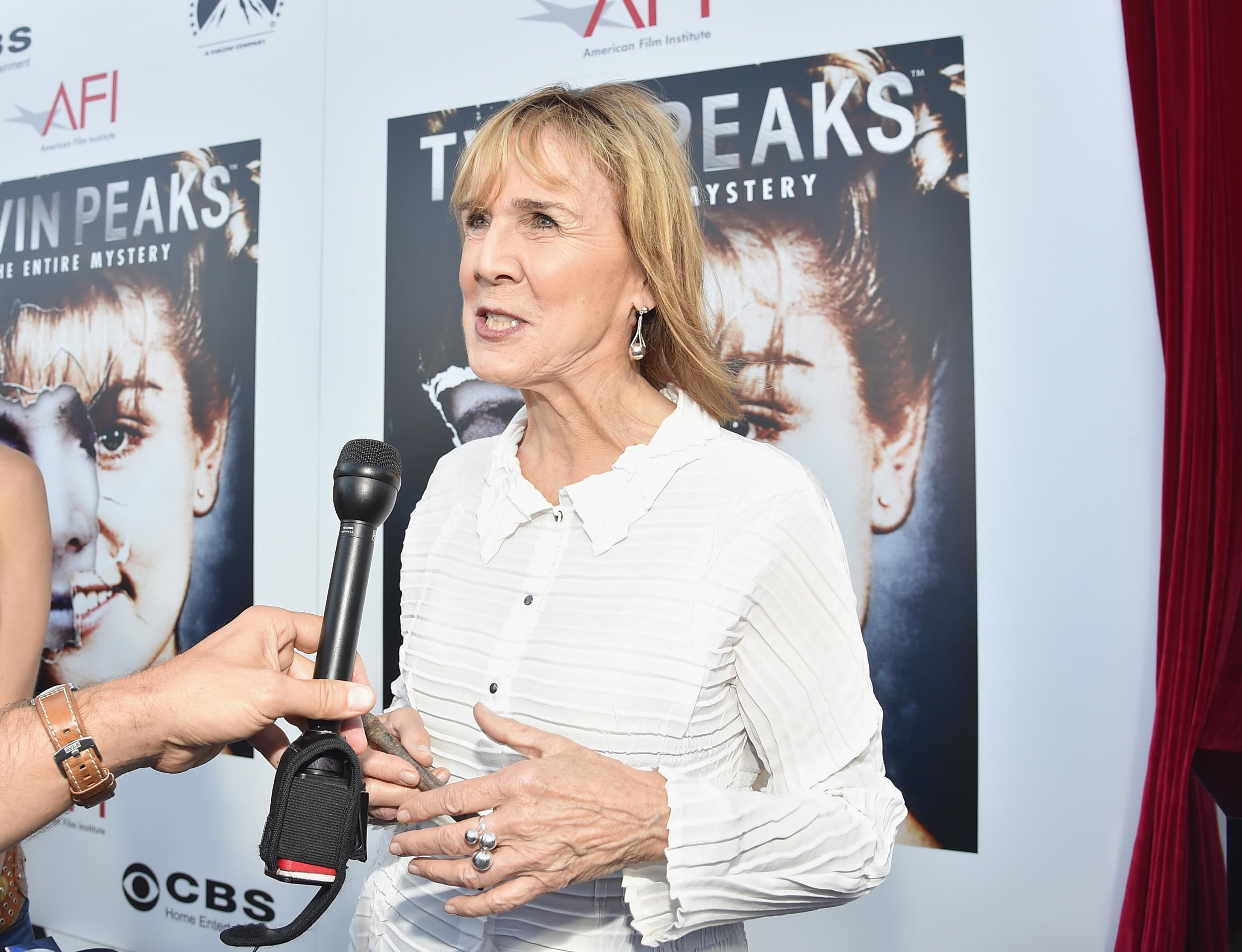Catherine Elizabeth Coulson: a tribute to the 'Log Lady'
The late actress worked with David Lynch on ‘Eraserhead’ before becoming the Log Lady in his ‘Twin Peaks’ series

The Log Lady, a prescient character who made mysterious pronouncements, became one of the most popular characters in David Lynch’s cult television series Twin Peaks. It was Catherine Coulson’s best-known role and she hugely enjoyed the fame it brought, happily attending Twin Peaks events and signing autographs (sometimes on logs) for her fans. But her career was far more varied, and as well as acting she was assistant camera operator on films ranging from independents to the second entry in the Star Trek franchise.
Coulson’s mother, Elizabeth Fellegi, was a ballet dancer, while her father worked in radio and television production and PR. Soon after Catherine’s birth the family moved to southern California; she studied acting at Scripps College in Claremont, and gained a Masters of Fine Arts at San Francisco State University before embarking on a stage career.
In the early 1970s, while teaching acting at the American Film Institute, she met David Lynch, who was developing Eraserhead, his surreal first feature about the troubled father of a weirdly deformed child, He cast Coulson’s husband, Jack Nance, in the lead role. After about a year, he ran out of money and stopped shooting.
When the AFI asked Eraserhead’s cinematographer, Frederick Elmes, to test two monochrome video stocks, Lynch and Coulson sat up all night to write a short film, The Amputee, filming it the next day. The blackly comic single scene featured Lynch as a female nurse increasingly desperately tending the suppurating stump of a legless Coulson, who blithely writes a letter about a collapsing relationship.
When Eraserhead got back on track, everyone was expected to multi-task. Coulson acted (though her scenes were either never filmed or were cut), helped with special effects, was stills photographer and assistant director, and oversaw continuity on her husband’s bizarre hairstyle. She also contributed financially to keep it going. During the filming, Lynch said he had had a vision of her carrying a log in a television series called I’ll Test My Log With Every Branch of Knowledge. That series was never made, and it would be almost 20 years before the dream came to fruition in Twin Peaks.
By the time Eraserhead was released, in 1977, Coulson and Nance had divorced. She began to develop a career as a camera assistant, usually on independent films. Notable credits include John Cassavetes’ The Killing of a Chinese Bookie, released a year before Eraserhead in 1976, and Opening Night (1977). More surprising, perhaps, was her work on Tobe Hooper’s Toolbox Murders (1978) which was banned in the UK and placed on the video nasties list. After several more low-budget films, Coulson netted a blockbuster, working as first assistant camera on Star Trek II: the Wrath of Khan (1982).
In 1988 Coulson joined Lynch as assistant camera on his short The Cowboy and the Frenchman, and in 1991 she worked on Jim Jarmusch’s taxi-bound anthology Night on Earth.The following year, a documentary about film composer Bernard Herrmann was her last stint behind the camera.
Coulson returned to acting, hitting the ground running, with the role for which she would become best known – Twin Peaks’ Log Lady, whom she described as “the only normal person on the show”. She reprised the role in 1992’s prequel/sequel feature, Twin Peaks: Fire Walk With Me, but the cult TV success failed to translate into a hit film, an effect perhaps exacerbated by some people’s frustrated expectation that it would “explain” the series, though that was never likely. A stranger spin-off was a set of four ads for Japanese canned coffee, set in the Twin Peaks world, with the Log Lady popping up to affirm Agent Cooper’s assurance that it was good.
Coulson continued in quirky, independent projects: a 2010 episode of the TV series Psych is essentially a homage to Twin Peaks, with Coulson playing the Wood Woman.
Recently, after many rumours of a new series of Twin Peaks, it seemed to be going ahead but Lynch walked, arguing for a larger budget. The cast filmed a series of pleas: “Twin Peaks without David Lynch…” Coulson’s view would be that “it would be like the log without bark’.Lynch was persuaded back and the series greenlit for transmission in 2016. Coulson was set to return and Lynch indicated that The Log Lady would be concerned with sustainable arboriculture.
In addition to her work on screen, Coulson, who died of cancer, was a dedicated stage actor. Beginning in 1994, she spent 22 seasons at the Oregon Shakespeare Festival in her birthplace of Ashland, appearing in more than 50 productions there. Robert Shenkkan wrote the role of Catherine for her in By the Waters of Babylon (1994), and she also played Big Mama in Cat on a Hot Tin Roof (2010), Giant and Milky White in Into the Woods (2014) and appeared in Guys and Dolls (2015).
She also worked at other companies including the Ensemble Theatre of Santa Barbara, Denver Center, San Jose Repertory Theatre and Mark Taper Forum.
Catherine Elizabeth Coulson, actress and film-maker: born Elmhurst, Illinois 22 October 1943; married 1968 Jack Nance (divorced (1976), secondly Marc Sirinsky (one daughter); died Ashland , Oregon 28 September 2015.
Join our commenting forum
Join thought-provoking conversations, follow other Independent readers and see their replies
Comments